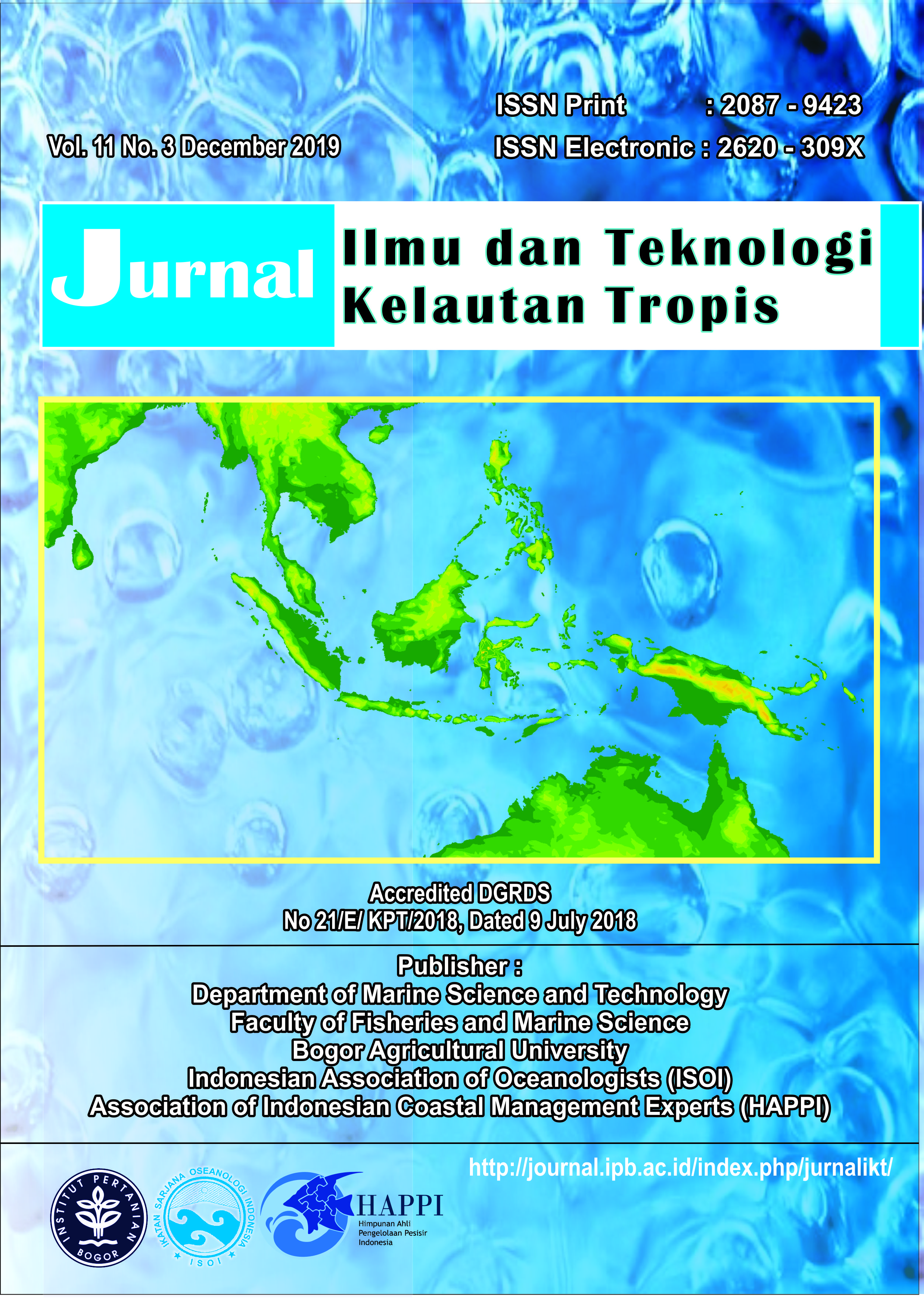BIOLOGICAL ASPECTS AND EXPLOITATION PAPUAN SEERFISH (Scomberomorus multiradiatus Munro, 1964) WITH GILLNET IN MERAUKE WATERS AND ADJACENTS
Abstract
Papuan mackerel (Scomberomorus multiradiatus) is a Papua endemic fish caught only in Merauke waters and adjacents. The exploitation of this fish by local people with the level of production has increased from year to year. In the management of Papuan mackerel fish populations, scientific studies are needed about biological aspects and their use by drifting gillnets. The study was conducted for 2 (two) years, March - December 2017 and April - December 2018 with survey methods assisted by enumerators monthly. Data on the composition of the catch of the gillnet drift dominantly demersal fish because it is operated in shallow waters that sweep to the bottom. Papuan mackerel is only about 6-10% of the total catch with a dominant size structure at 40 cm FL (fork length) and allometric positive growth pattern. The sex ratio of the fish is unbalanced with the male dominant compared to the female. The size of the first fish caught is getting smaller in size, namely 32.08 (2017) to 30.50 (2018) which can be an indication that the fish size is getting smaller. The growth rate (K) is around 0.64 which shows that the growth rate is relatively slow with the rate of death due to capture (F) higher than natural death (M). The exploitation of this fish has reached E = 0.70 or 140%, so a 40% reduction must be made from the current effort and by developing local wisdom so that the endemic fish population is maintained.
Authors
This work is licensed under a Creative Commons Attribution 4.0 International License.
Jurnal Ilmu dan Teknologi Kelautan Tropis i is an open-access journal, meaning that all content is freely available without charge to the user or their institution. Users are allowed to read, download, copy, distribute, print, search, or link to the full texts of the articles in this journal without needing to request prior permission from the publisher or the author.
All articles published by Jurnal Ilmu dan Teknologi Kelautan Tropis are licensed under the Creative Commons Attribution 4.0 International License. This allows for unrestricted use, distribution, and reproduction in any medium, provided proper credit is given to the original authors.
Authors submitting manuscripts should understand and agree that the copyright of published manuscripts is retained by the authors. Copyright encompasses the exclusive rights of authors to reproduce, distribute, and sell any part of the journal articles in all forms and media. Reproduction of any part of this journal, its storage in databases, and its transmission by any form or media is allowed without written permission from Jurnal Ilmu dan Teknologi Kelautan Tropis.


